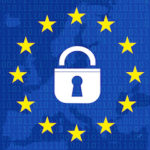Big Oil Goes Green
World Future Energy Summit 2013,
Abu Dhabi, Jan. 15-17

Abu Dhabi, one of the seven semiautonomous emirates that make up the United Arab Emirates (UAE) as well as the UAE’s capital, is a place of contrasts. Soaring skyscrapers dominate its skyline, yet Bedouin traditions are strongly evident. A glitzy Formula 1 racetrack entertains spectators on one side of the city, while dusty camel racing takes place on another. And although Abu Dhabi is one of the world’s leading oil producers, it is also a hub for the renewable-energy industry. Indeed, every year the city hosts the foremost international meeting dedicated to renewable energies.
Each January, policy makers, industry leaders, engineers, entrepreneurs, investors, environmentalists, and media from around the globe gather in Abu Dhabi — atop one of the world’s deepest reserves of oil and natural gas — for the World Future Energy Summit (WFES). The meeting provides a high-profile forum to discuss renewable-energy policies and showcase the latest sustainable technology and solutions. Since launching five years ago, WFES has become a must-attend event for the renewable-energy industry; this year the show drew nearly 30,000 attendees and saw 70 product launches. “It’s the premier event in the region,” said Benjamin Yu, business development director at Wuxi, China- based Suntech, the world’s largest producer of solar panels, “and that’s why we’re here every year.”
Convene was there this year as well, at the invitation of the Abu Dhabi National Exhibitions Company, whose Abu Dhabi National Exhibition Centre (ADNEC) hosted WFES 2013, to experience the increasingly influential show and see exactly how big oil goes green.
Save Yourself, Save The Planet
Abu Dhabi, which pumps out nearly 3 million barrels of oil a day, may seem like a surprising player in the renewable energy arena. But the emirate has invested heavily in nuclear- and renewable-energy alternatives, and is working to position itself as a leader in clean technology. “The world must work together to address energy and water access, food security, and tackle the consequences of climate change,” Sheikh Mohammed bin Zayed Al Nahyan, crown prince of Abu Dhabi and deputy supreme commander of the UAE Armed Forces, said via translator during WFES 2013’s opening ceremony. “The United Arab Emirates is committed to face this challenge and is pushing forward to accelerate clean energy and adopt sustainable development.”
The UAE’s motivation may be as much about itself as saving the planet. Its oil reserves are expected to run out sometime in the next hundred years (Abu Dhabi’s sooner than that), and the government wants to be relevant in a greener future. “Delivering the world with important supplies of hydrocarbons for almost half a century,” Sheikh Mohammed told the 3,500 delegates gathered for the opening ceremony, “it’s natural for the UAE to invest and play an active role in diversifying the energy mix to include renewable sources of energy.”
In fact, over the past decade, Abu Dhabi has invested billions into renewable-energy projects. The emirate’s greenenergy investments are organized under the umbrella of the Masdar Initiative, a multifaceted effort intended to diversify the Abu Dhabi economy and provide long-term job creation for its growing population. As part of the initiative, the government established the Abu Dhabi Future Energy Company, known as Masdar; in 2008, Masdar hosted the first WFES.
WFES 2008 was a mostly regional, 5,000-attendee event. “When we started, it was like, are you guys serious about this?” said Rashed Obaid Al Dhaheri, head of special projects for Masdar, acknowledging that some people questioned the legitimacy of a renewable-energy event hosted by and held in an oil-rich capital. But Masdar made international headlines at that first show by announcing major investments in local and international wind-, solar-, and other clean-energy projects. The following year, Abu Dhabi won its bid to host the permanent headquarters for the International Renewable Energy Agency (IRENA), pledging $50 million in annual loans to finance renewable-energy projects in developing countries.
‘The Time Is Here. The Time Is Now.’
While WFES has grown every year since its inception, this year’s show announced Abu Dhabi’s arrival on the green scene in a big way. WFES 2013 was held under the umbrella of the inaugural Abu Dhabi Sustainability Week — five days and six events dedicated to renewable energy, including the International Water Summit (IWS), which co-located with WFES. Over the course of three days, WFES and IWS drew 29,448 attendees from 155 countries to ADNEC — a 37-percent increase in foreign participation.
 |
WFES’s rising prominence was evidenced by the many foreign dignitaries and high-ranking policymakers in attendance. The first day’s opening ceremony was attended by the prime minister and vice president of the UAE, along with 91 official delegations from across the globe. In addition to Sheikh Mohammed’s keynote speech, there were remarks by French President Francois Hollande, Argentinian President Cristina Fernandez de Kirchner, and Jordan’s Queen Rania — all calling for increased cooperation among nations and deeper investment in renewable energy. “If we don’t act, we can be sure we will have a catastrophe very soon,” Hollande said. “We are sharing the same preoccupations, but we also need to share the same ambitions. We shouldn’t waste time anymore. We should act, gather together, and gather our forces and resources.”
“This is our opportunity to work together,” said Sultan Ahmed Al Jaber, CEO of Masdar, “to commit to real action, to innovate and strike a balance crucial to building a sustainable future. The time is here. The time is now.”
Oil, Oil Everywhere
Once the opening ceremony was finished, the exhibit hall took center stage. (The conference began on day two.) In the show’s vast, 130,000-square-foot space, 650 exhibitors from 40 countries showcased the latest in solar and wind energy, desalination pumps, smart grids, waste and water management, energy storage, clean technology, and energy-efficient innovations.
The world must work together to address energy and water access, food security, and the consequences of climate change.
Amid this sea of green suppliers and vendors stood big oil, on very big display. The largest and most elaborate booths on the convention floor belonged to the world’s leading oil companies, including the Abu Dhabi National Oil Company, Shell, ExxonMobil, and the French giant Total — all of them platinum sponsors of WFES 2013. The oil companies’ booths highlighted their own efforts to be more energy efficient as well as their investments in sustainable practices and projects.
Masdar and Total, for example, have partnered to build one of the world’s largest concentrated solar-power plants. Located in the western region of Abu Dhabi, the Shams-1 plant is the first of its kind in the Middle East and eventually will generate enough power for 20,000 homes. A model of Shams-1 was on display at the Masdar booth, along with a large model of the London Array, an offshore wind farm that Masdar is building in partnership with e-on, a U.K. oil and gas company.
Deeper in the exhibit hall, exhibitors were grouped both by country and by sector, and the breadth of technologies and products on display highlighted the enormity of a topic as broad as “future energy.” Booths featured everything from an enclosed electric motorbike that can reach speeds of 155 mph, to municipal waste-treatment solutions, large-scale desalination pumps, and portable solar panels for mobile battery charging.
Deeper still, in the U.S. pavilion, stood John Buckey, president of Toledo, Ohio-based Xunlight. The company, which produces flexible, lightweight solar panels, was a first-time exhibitor. Buckey said he was there to target clients and build relationships with potential distributors. Xunlight’s booth had seen “pretty good” activity, but Buckey wasn’t sure if the size of the show was a hindrance and if his company might fare better at a smaller, more focused exhibition. At the same time, he said, “it’s great just to see everything that is going on in the industry.”
Suntech’s Yu agreed that the networking and market research that take place at WFES are valuable. “We’re here to understand what’s happening in the market,” he said. “Our focus is definitely making sales, but the exchange of information is playing a bigger role this year and will help us measure our success here.”
Learning Curve
Recognizing the importance of educational programming and knowledge sharing in a nascent industry, show organizers amped up the conference portion of WFES this year. According to Masdar, 1,045 people (up 7 percent from 2012) attended the WFES 2013 conference program, which featured 165 speakers in 16 hours of panel discussions and plenary sessions over two days. Topics ranged from the role of domestic and international policies on the future of renewable markets, to the outlook for private-sector financing.
Show organizers also created space for educational programming on the exhibit floor. The Sustainable Solutions Village in the IWS exhibit space, for example, was used to display and highlight projects that have been successfully implemented in water-scarce communities across the world. Similarly, the Technology Exchange Platform, located in the rear of the WFES exhibition area, provided a mini presentation and exhibit space for companies to promote their technologies and services. “This is more interactive and allows for more exchange between presenter and audience,” said Reed Exhibitions’ Naji El Haddad, WFES’s show director. Over the course of the three-day exhibition, 33 speakers gave 25-minute presentations on topics such as best practices in Middle East solar plants and the potential for recycling and reusing biogas — under the title “Toilet: A Tool of Social Change.”
Several of the larger exhibitors, including Schneider Electric, Statoil, and ExxonMobil, offered programming within their booths. At the ExxonMobil Energy Outlook Forum, a separate area within the large ExxonMobil booth served as a mini-auditorium for 10 speakers. And the Ernst & Young-sponsored Project & Finance Village offered sessions on the renewable investment market, and also showcased 30 clean-tech and renewable-energy projects looking for outside investment. With annual investment in renewables up to an estimated $257 billion worldwide, it’s not surprising the Village has grown in popularity and size since it was introduced three years ago. “We launched the Village in 2011 with 16 projects,” said Robert Seiter, Ernst & Young’s cleantech leader for Europe, Middle East, and Asia. “This year, we have 30 projects with an estimated investment value of $8 billion.”
Attendee Matchmaking
From the venture capitalists in the Project & Finance Village, to the visiting sheikhs, Western oil executives, earnest policy types, Yemeni suppliers, Chinese solar vendors, German entrepreneurs, and Emirati students — WFES was a melting pot of nations, interests, and agendas. The diversity reflected the interconnectedness of the private and public sectors in today’s renewable-energy market, and highlighted the challenge that WFES organizers faced in meeting the needs of such a varied audience.
“With so many different interests attending, it just means we have to work very hard to communicate specific messages to each group,” El Haddad said. “We have direct marketing programs targeted to specific people. For academics, we talk about the intellectual parts of the program; for business leaders, we talk about investment opportunities; and for politicians, it’s how to achieve their policy objectives.”
Once attendees are on site, WFES intentionally doesn’t separate them into different tracks. “In order to solve the issue of renewable energy, you’ve got to get three stakeholder groups talking,” said Reed Exhibitions’ Peter McConnell, who is IWS’s show director. “You have to get policy moving in the right direction, you have to have science and technology, and you have adoption of solutions by business. We want to foster a dialogue between those three different stakeholders, so we don’t want to split them apart. Instead, we try to customize their experience within the larger context of the show.”
For example, WFES offers attendees a show app and online planner that allows them to search exhibitors by product and interest. This year, Reed also unveiled a WFES/IWS online matchmaking tool. After logging in, a visitor (attendee or exhibitor) was presented with a list of suggested exhibitors, based on the selected sector of interest. Once an exhibitor was chosen, the tool sent a meeting request to the other party and helped coordinate a prescheduled meeting.
A similar, in-person matchmaking service was also available on site to international visitors. “The international visitors have limited time,” El Haddad said, “and we want to make the best use of their time and offer an experience that will make their visit rewarding.” At a separate check-in desk next to the main registration area, a team of 10 specialists from an outside company contracted by Reed worked with international attendees to locate relevant exhibitors and request on-site meetings. “If they would have to wander around, it might take two or three hours of their time to figure out who is where,” El Haddad said. “This is more efficient, and one more way to customize the experience.”
And with Bloomberg New Energy Finance estimating that global spending on renewable energy will hit $7 trillion by 2030, that experience is only going to become more important. While it’s not yet clear what the coming market will look like, the future seems bright for renewable energy — and, by extension, WFES. When the curtain fell on WFES 2013, 70 percent of exhibit space had already been booked for next year’s show.
Same desert, same oil nation, same green movement. Same time next year.
– Molly Brennan
The Next Generation
Global Young Scientists Summit 2013
Singapore, Jan. 20-25
 |
Singapore has established itself as one of the premier meeting destinations in Southeast Asia, attracting many large conventions in a variety of industries, from Herbalife’s Singapore Extravaganza in 2012 to the Aviation Security Conference and Pharma-Nutrition this year. But for the small island city-state with a population of about 5.2 million, meetings aren’t just about attracting dollars and visitors — they’re about creating and sustaining a knowledge economy that is second to none.
“Singapore has found success in today’s interconnected world as a global hub in many sectors such as transportation, commerce, and finance,” Singapore President Tony Tan said during closing remarks at the inaugural Global Young Scientists Summit (GYSS), which Singapore hosted in January. “… Through sustained investments in R&D over the last 20 years, Singapore has built up a strong base of local expertise housed in several world-class research universities, leading-edge research centers, institutes, and corporate labs.”
Convene accepted the Singapore Tourism Board’s invitation to join approximately 280 scientists in Singapore’s onenorth vicinity — a research hub that includes private- and public-sector research labs and institutions, hospitals, and universities — for GYSS on Jan. 20-25. The event took place primarily at the National University of Singapore’s (NUS) University Town, an educational complex with student residences and teaching and research facilities, including the Centre for Research Excellence and Technological Enterprise (CREATE), which houses Singapore’s National Research Foundation (NRF) — the division of the prime minister’s office that created GYSS.
The National University of Singapore (NUS) and one-north don’t usually function as meeting venues — conferences in Singapore most often take place at meeting-specific facilities like Suntec Singapore International Convention and Exhibition Centre (reopening next month after an extensive renovation), Singapore Expo, or the convention centers located in the Resorts World Sentosa and Marina Bay Sands properties.
“Singapore’s hope is that GYSS@one-north will excite and inspire the next generation of bright young scientists,” Teo Chee Hean, the country’s deputy prime minister and chairman of the NRF, said at GYSS’s opening ceremony, “to embark on research that addresses global challenges and the future needs of mankind.”
Skilled Scientists
When I first heard “young scientists,” I assumed that GYSS would cater to middle- or high-school students. But in this case, “young” meant post-doctoral researchers and Ph.D. students from myriad fields, all under the age of 35. The NRF, which funded the entire summit (estimated to have cost approximately $1 million U.S. — part of the $13.1 billion in public spending that Singapore has devoted to R&D between 2011-2015), put out a call for delegates to universities and other educational institutions with a significant presence in Singapore or a strong relationship with local research institutions, such as Singapore’s Agency for Science, Technology, and Research (A*STAR); Nanyang Technological University (NTU); and Singapore University of Technology and Design. Institutions then nominated their young scientists to attend GYSS; participants hailed from all over the globe, with about 60 percent coming from various countries in Asia.
But GYSS — which was themed “Advancing Science, Creating Technologies for a Better World” — attracted more than just young researchers. Speakers and presenters included 11 Nobel laureates, along with Millennium Technology Prize, Turing Award, and Fields Medal winners in physics, chemistry, biology, mathematics, computer science, and other fields.
 |
GYSS programming featured plenary and breakout sessions led by the guest speakers, along with site visits and tours of local labs such as the Institute of Medical Biology, the Earth Observatory of Singapore, and the Institute for Media Innovation. Evenings were reserved for social visits to some of Singapore’s main attractions — the Singapore Flyer, Night Safari, and the Singapore Night City Tour. The majority of educational programs were held at NUS’s Edu-Sports complex, a sports and fitness facility that also houses an auditorium where plenary sessions and the closing ceremony took place. While breakout sessions and panels were closed to the public, media and other guests were able to attend plenary talks, including South African biologist Sydney Brenner on “Humans in a Dish” and American physicist Eric Cornell on “Extreme Meteorology: Towards Measuring the Out-of-Roundness of the Electron at 10-15 Femtometers.”
I mingled with some of the attendees at registration prior to the opening ceremony, which featured a speech by Hean. This portion of the event was held at NUS’s University Cultural Centre, a large building with a lobby brightened by floor-to-ceiling windows, set in a lush landscape of palm trees and other foliage. Along with registration, an appetizer-andcoffee reception took place in the lobby, one of many signs that Singaporeans are not inclined to let guests go hungry.
Much of the chatter was of the getting-to-know-you variety — scientific specialties, country and institution of origin, whether there’d be cocktails after the ceremony. But I did get a chance to speak with a few of the attendees about what made them attend GYSS. “Most of the programming and the list of Nobel laureates was set by the time they sent out invitations” in September 2012, said Benjamin Toh Pang Kiat, a post-doctoral researcher in immunology at A*STAR. “Usually a few [Nobel Prize winners] will come in [to Singapore] each year, but it is unprecedented to have so many here at once.”
R&D&GYSS
Unprecedented GYSS was, for a variety of reasons. Although Singapore is well known for hosting high-level science, technical, and medical meetings, this was the first event of its kind drawing young and accomplished scientists together in Singapore — conceptualized when President Tan, who is the former chairman of the NRF, attended the Lindau Nobel Laureate Meeting in Lindau, Germany, in 2010. The annual Lindau meeting describes itself as a “globally recognized forum for the transfer of knowledge between generations of scientists”; the idea was for the NRF to create a similar event, with a focus on Asian participation, that would expose young scientists to the development of a knowledge economy — one of the Singapore government’s foremost missions. In Tan’s vision, GYSS not only would inspire the next generation of scientists to build and foster a global research network, but also would create something of a talent pipeline for local institutions in Singapore.
“Singapore makes an intentional effort in developing R&D talent and fostering research that will go out into the common space,” said George Loh, the NRF’s director. “We wanted to attract foreign researchers and eminent scientists who would give talks to students and at meetings here, helping to create a vibrant R&D hub.”
Part of this development centers on use-inspired research to address major global challenges. To that end, a portion of the GYSS program was dedicated to the Singapore Challenge, wherein attendees were invited to submit white papers describing their research on a proposed solution to solve an identified challenge for future cities. An initial panel of judges selected 10 finalists to present their ideas to a second panel of judges and GYSS participants during the closing ceremony. Lynette Cheah, a research scientist at A*STAR’s Institute of Chemical and Engineering Sciences, was awarded the Singapore Challenge Medallion as well as a cash prize of $100,000 U.S. to continue her research on building a transportation system that would inform commuters in real-time of the best routes to take during times of heavy traffic and provide feedback for other methods of transportation — like buses and taxis — to respond to the needs of travelers.
GYSS closed with a speech from Tan. Reiterating the NRF’s desire for Singapore to be known as a place for research, innovation, and enterprise, the president urged the scientists in attendance “to maintain the links that you have established over the last five days and keep up the dialogue and exchanges beyond the GYSS. It is good for science and good for society when researchers build networks and collaborate openly to translate research outcomes to build a better world.”
— Katie Kervin



